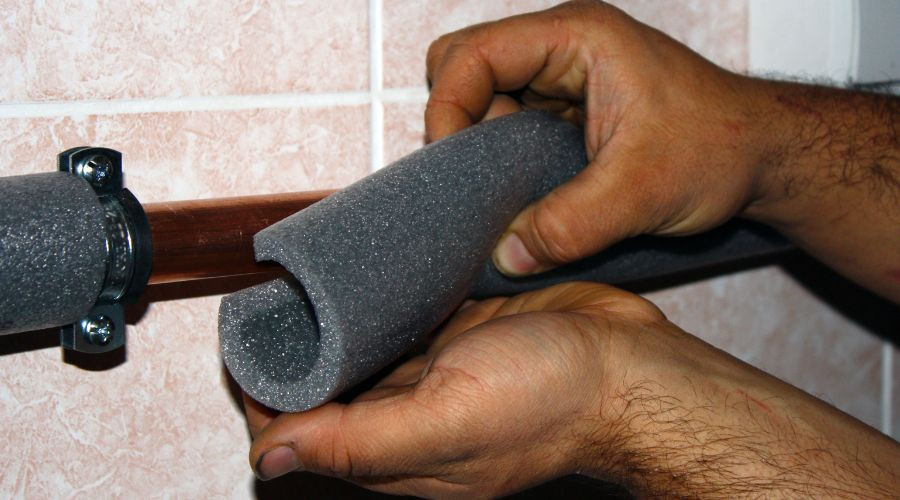Ways to Help Prevent and Deal With Frozen Pipes
Frozen pipes are a common problem for homeowners and business owners. In winter, temperatures can easily dip below freezing, threatening vulnerable pipes. When a water pipe freezes, water service is lost to everything it serves. While this can be a major inconvenience, the greatest danger of frozen pipes is burst pipes, which can cause major flooding.
Every owner should know how to prevent frozen and burst pipes. Here is a quick guide to help everyone through the process.
Damage From Frozen Pipes
 Water is unique in its physical properties. Changing from a liquid to a solid phase causes most compounds to contract. Water does the opposite. Instead of contracting when it cools and freezes, it expands. When water is put under pressure in a pipe, the expansion can cause the pipe's walls to rupture. As the ice thaws, the pressure inside the pipe will push out the ice blockage, and full-line pressure will erupt from the water pipe.
Water is unique in its physical properties. Changing from a liquid to a solid phase causes most compounds to contract. Water does the opposite. Instead of contracting when it cools and freezes, it expands. When water is put under pressure in a pipe, the expansion can cause the pipe's walls to rupture. As the ice thaws, the pressure inside the pipe will push out the ice blockage, and full-line pressure will erupt from the water pipe.
One water pipe serves several fixtures, and each fixture regulates water pressure for use, so most people do not know how much water can flow from one single pipe if it bursts. In reality, a single burst pipe can flood an entire floor of a home in a matter of minutes, devastating the flooring, furniture, and walls. Indeed, some of the largest insurance claims yearly stem from devastating flooding from burst frozen pipes.
Preventing Frozen Pipes
 Luckily, preventing frozen piping is easy, considering the risks of exposing it. The first step is to check with a plumber to see if piping can be rerouted to warmer areas of the structure. Rerouting piping into attics, crawl spaces, and walls can prevent most frozen pipes.
Luckily, preventing frozen piping is easy, considering the risks of exposing it. The first step is to check with a plumber to see if piping can be rerouted to warmer areas of the structure. Rerouting piping into attics, crawl spaces, and walls can prevent most frozen pipes.
If pipes cannot be rerouted, pipe insulation is the next best thing. Pipe insulation is simple to install and cheap. It consists of foam tubes that can be sealed on exposed piping. The extra insulation layer allows pipes to stay exposed without dipping below freezing.
Finally, leaving water dripping from faucets and opening cabinets can help prevent frozen pipes during cold snaps. Allowing faucets to drip ensures warmer water always flows in the pipes, and leaving cabinets open allows warm air in the home to circulate nearer to the walls of the house piping.
Thawing Frozen Pipes
If a pipe thaws, the owner must respond quickly to prevent water damage, and the first step is to simply run the water. If the blockage isn’t complete, the warmer water will melt the ice in the line and restore water pressure. If the blockage is formed, heat will need to be applied. Heat guns, hair dryers, or space heaters are handy in this case. Finally, if the two strategies discussed have failed, call a plumber so they can inspect the pipe for damage and help mitigate the risk of the pipe bursting.
About Ira Hansen and Sons Plumbing
Ira Hansen and Sons Plumbing has been addressing plumbing installations and repairs for nearly 40 years. Their teams can help install pipe insulation or repair piping after a burst pipe. Call today for plumbing service in Reno, NV.



